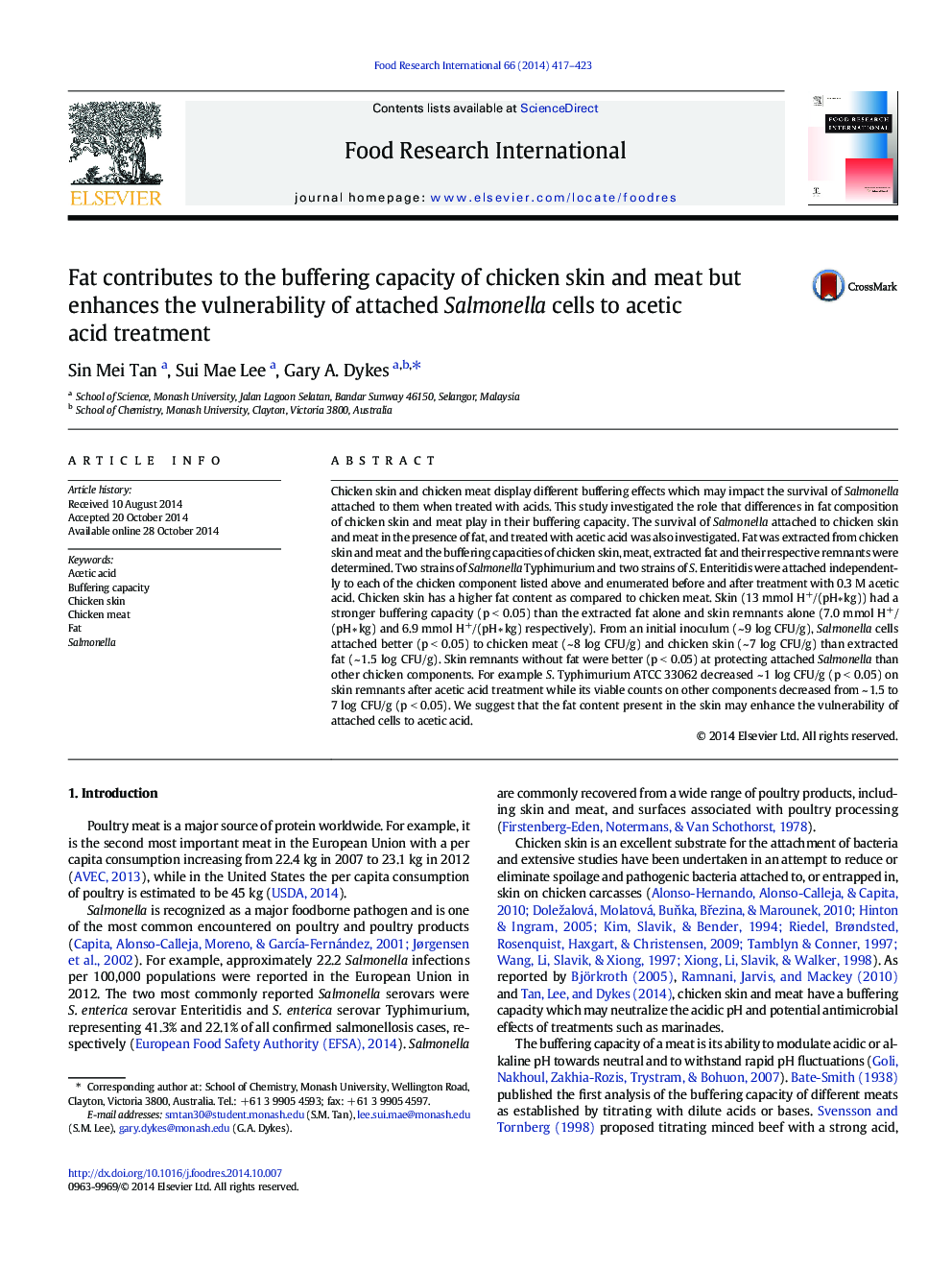| کد مقاله | کد نشریه | سال انتشار | مقاله انگلیسی | نسخه تمام متن |
|---|---|---|---|---|
| 6396261 | 1628480 | 2014 | 7 صفحه PDF | دانلود رایگان |
عنوان انگلیسی مقاله ISI
Fat contributes to the buffering capacity of chicken skin and meat but enhances the vulnerability of attached Salmonella cells to acetic acid treatment
ترجمه فارسی عنوان
چربی به ظرفیت بافر بودن پوست مرغ و گوشت کمک می کند اما آسیب پذیری سلول های سالمونلا را به درمان اسید استیک افزایش می دهد
دانلود مقاله + سفارش ترجمه
دانلود مقاله ISI انگلیسی
رایگان برای ایرانیان
کلمات کلیدی
استیک اسید، ظرفیت بافری، پوست مرغ، گوشت مرغ، چربی سالمونلا،
موضوعات مرتبط
علوم زیستی و بیوفناوری
علوم کشاورزی و بیولوژیک
دانش تغذیه
چکیده انگلیسی
Chicken skin and chicken meat display different buffering effects which may impact the survival of Salmonella attached to them when treated with acids. This study investigated the role that differences in fat composition of chicken skin and meat play in their buffering capacity. The survival of Salmonella attached to chicken skin and meat in the presence of fat, and treated with acetic acid was also investigated. Fat was extracted from chicken skin and meat and the buffering capacities of chicken skin, meat, extracted fat and their respective remnants were determined. Two strains of Salmonella Typhimurium and two strains of S. Enteritidis were attached independently to each of the chicken component listed above and enumerated before and after treatment with 0.3 M acetic acid. Chicken skin has a higher fat content as compared to chicken meat. Skin (13 mmol H+/(pHâ kg)) had a stronger buffering capacity (p < 0.05) than the extracted fat alone and skin remnants alone (7.0 mmol H+/(pH â kg) and 6.9 mmol H+/(pH â kg) respectively). From an initial inoculum (~ 9 log CFU/g), Salmonella cells attached better (p < 0.05) to chicken meat (~ 8 log CFU/g) and chicken skin (~ 7 log CFU/g) than extracted fat (~ 1.5 log CFU/g). Skin remnants without fat were better (p < 0.05) at protecting attached Salmonella than other chicken components. For example S. Typhimurium ATCC 33062 decreased ~ 1 log CFU/g (p < 0.05) on skin remnants after acetic acid treatment while its viable counts on other components decreased from ~ 1.5 to 7 log CFU/g (p < 0.05). We suggest that the fat content present in the skin may enhance the vulnerability of attached cells to acetic acid.
ناشر
Database: Elsevier - ScienceDirect (ساینس دایرکت)
Journal: Food Research International - Volume 66, December 2014, Pages 417-423
Journal: Food Research International - Volume 66, December 2014, Pages 417-423
نویسندگان
Sin Mei Tan, Sui Mae Lee, Gary A. Dykes,
